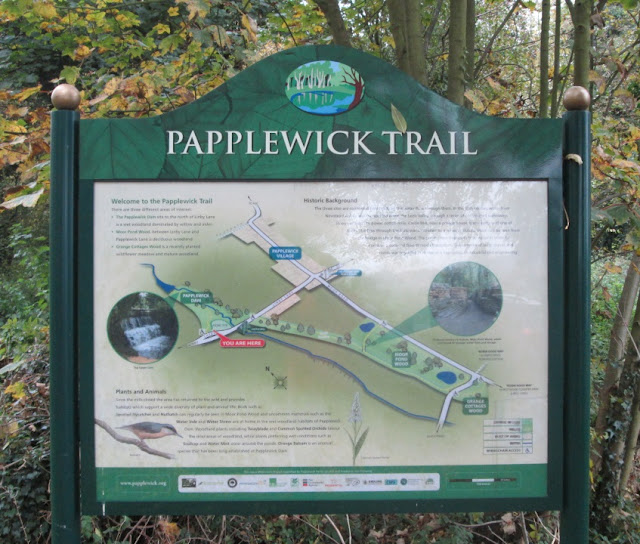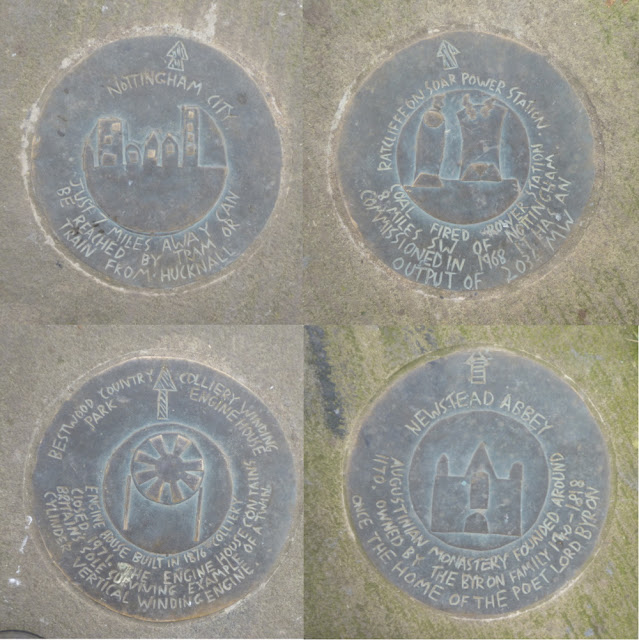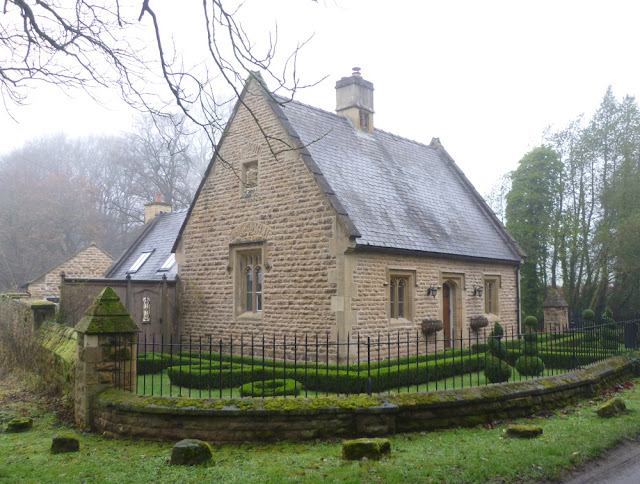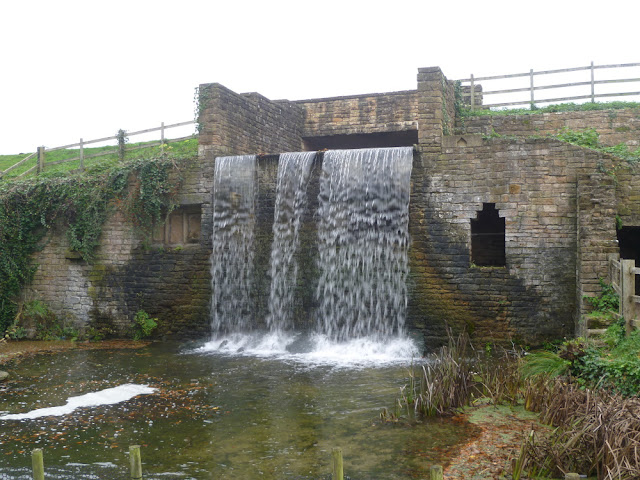
On a misty, moisty morning, from the Papplewick Village Hall (or the layby on Linby Lane), Elaine's 7½ mile walk took eighteen of us up the River Leen to Top Upper Dam and then across fields to Linby.
Persistent companion
By the River Leen in Papplewick Dam Wood.
Maintenance of Top Upper Dam. In the 18th century, water from here was transported through a network of leats to power cotton mills lower down the Leen. Note that, in the context of watermills, the word dam can refer to the water reservoir itself
Cottages in Linby
These streams, known as the Linby Docks, are tributaries of the River Leen and were used to feed the mills around Linby
St Michael's Church, Linby
From Linby we climbed up to The Ranges, the site of the Linby Colliery slag heap for views (or not) of Nottinghamshire and then along the Linby Trail to Freckland Wood, another restored colliery tip which features sculptures to commemorate the area's mining heritage.
Man & Dog on The Ranges
Set in the base of the sculpture.
On a good day you can see Ratcliffe on Soar Power Station !
Linby Trail - one of the few places in Nottinghamshire where bedrock is visible
Freckland Wood - examining the sculptures of ...
... a hammer, shovel and pick axe. Notice the butterfly and squirrel
North Lodge
Across the dam wall of the Upper Lake
View across the lake
Outfall from the lake - the source of the River Leen
From there we walked through the Newstead Abbey Gardens to pick up the lane back towards Papplewick.
VBR members spaced out after lunch
Diversion through the Great Garden tunnel to view Eagle Pond, The French and Spanish Gardens
Sculpted heads of famous Nottinghamshire writers in the Small Walled Garden
Almost back, Papplewick Hall on Main Street
Castle Mill (1782) on Linby Lane between the layby and the Village Hall. Its history and that of other mills on the Leen can be found here. The Leen Valley was flooded north of here to form the artificial lake known as Papplewick Dam and the Linby road ran across the dam wall






















